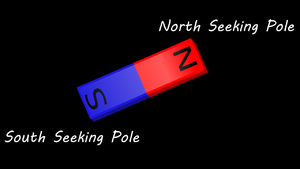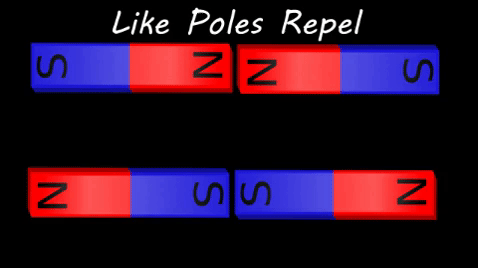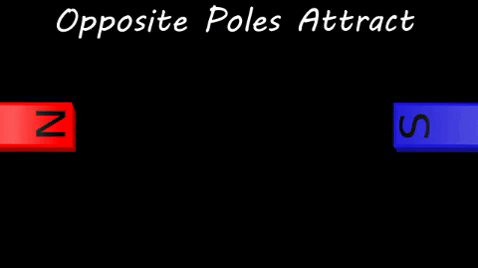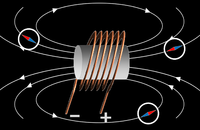Difference between revisions of "Poles"
(→About Poles) |
|||
| (5 intermediate revisions by 2 users not shown) | |||
| Line 29: | Line 29: | ||
==Key Stage 4== | ==Key Stage 4== | ||
===Meaning=== | ===Meaning=== | ||
| − | A '''pole''' is | + | A '''pole''' is point on a [[magnet]] where the most dense region of [[Magnetic Field|magnetic field lines]] enter the [[magnet]]. |
===About Poles=== | ===About Poles=== | ||
| Line 35: | Line 35: | ||
: Two like '''poles''' will [[repel]] each other: North-North and South-South. | : Two like '''poles''' will [[repel]] each other: North-North and South-South. | ||
: Two opposite '''poles''' will [[attract]] each other: North-South. | : Two opposite '''poles''' will [[attract]] each other: North-South. | ||
| − | : A [[compass]] can be used to identify the '''poles''' on an [[ | + | : A [[compass]] can be used to identify the '''poles''' on an [[magnet]] as it will point towards the South Seeking '''pole''' and away from the North Seeking '''pole'''. |
| + | |||
| + | {| class="wikitable" | ||
| + | |- | ||
| + | |[[File:BarMagnetCompass.png|center|200px]] | ||
| + | |[[File:MagneticFieldEarthCompass.png|center|200px]] | ||
| + | |[[File:ElectromagnetCompass.png|center|200px]] | ||
| + | |- | ||
| + | | style="height:20px; width:200px; text-align:center;" |The red point of the [[compass]] points towards the South Seeking '''Pole''' of the [[magnet]]. | ||
| + | | style="height:20px; width:200px; text-align:center;" |This [[diagram]] shows that the 'North Pole' of [[Earth]] is the South Seeking '''Pole''' of a [[magnet]]. | ||
| + | | style="height:20px; width:200px; text-align:center;" |This [[diagram]] shows that when [[Electrical Current|current]] enters the coil clockwise, that is the South Seeking '''Pole''' of a [[magnet]]. | ||
| + | |} | ||
| + | |||
| + | ===References=== | ||
| + | ====AQA==== | ||
| + | |||
| + | :[https://www.amazon.co.uk/gp/product/1471851370/ref=as_li_tl?ie=UTF8&camp=1634&creative=6738&creativeASIN=1471851370&linkCode=as2&tag=nrjc-21&linkId=01c69b0ae058f809cf636033e6ba793e ''Poles, magnetic, page 221, GCSE Physics, Hodder, AQA ''] | ||
| + | :[https://www.amazon.co.uk/gp/product/1471851362/ref=as_li_tl?ie=UTF8&camp=1634&creative=6738&creativeASIN=1471851362&linkCode=as2&tag=nrjc-21&linkId=7d78d70a2044ee9982dae010c94af92a ''Poles, magnetic, pages 275, GCSE Combined Science Trilogy 2, Hodder, AQA ''] | ||
Latest revision as of 15:29, 27 May 2020
Contents
Key Stage 2
Meaning

There are two poles on a magnet.
A pole is one end of a magnet.
About Poles
- The pole on a magnet can be a north seeking pole or a south seeking pole.
- Two like poles will repel each other: North-North and South-South.
- Two opposite poles will attract each other: North-South.
| Two magnets facing North-North will repel each other and two magnets facing South-South will repel each other. | Two magnets facing North-South will attract each other. |
Key Stage 3
Meaning
A pole is one end of a magnet.
About Poles
- The pole on a magnet can be a north seeking pole or a south seeking pole.
- Two like poles will repel each other: North-North and South-South.
- Two opposite poles will attract each other: North-South.
Key Stage 4
Meaning
A pole is point on a magnet where the most dense region of magnetic field lines enter the magnet.
About Poles
- The pole on a magnet can be a north seeking pole or a south seeking pole.
- Two like poles will repel each other: North-North and South-South.
- Two opposite poles will attract each other: North-South.
- A compass can be used to identify the poles on an magnet as it will point towards the South Seeking pole and away from the North Seeking pole.
| The red point of the compass points towards the South Seeking Pole of the magnet. | This diagram shows that the 'North Pole' of Earth is the South Seeking Pole of a magnet. | This diagram shows that when current enters the coil clockwise, that is the South Seeking Pole of a magnet. |




